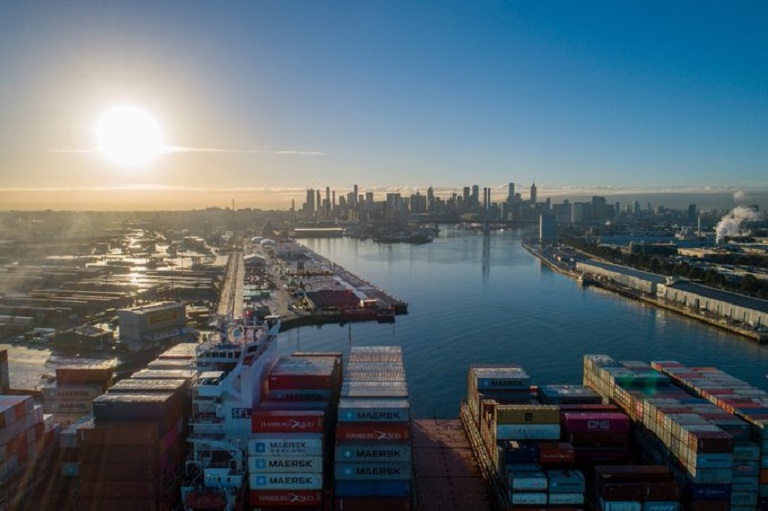The Port of Melbourne has today released the final version of its 30 year Port Development Strategy 2050 (2050 PDS). Port of Melbourne CEO, Brendan Bourke says the 2050 PDS is a comprehensive plan for the future development of the Port, developed through consultation with stakeholders, and responds to Victoria’s future trade needs.

“Throughout the COVID-19 environment we have seen the essential role that freight plays in underpinning our economy and the critical role of the Port in operating 24/7, 365 days a year and delivering the goods Victorians and Australians need every day,” said Mr Bourke. “We are committed to our investment program to ensure we remain the premier container port in Australia, a cornerstone of the Victorian economy and a supporter of Australian exports.
“It’s vital that we all stay focused on the bigger picture – delivering the right infrastructure and operating environment to drive efficiencies in the supply chain so that we can continue to play our role in the state’s economic future.” To meet future population growth and demand, Port of Melbourne is investing in 10 infrastructure projects. The key Port Rail Transformation Project is already underway, and will move more freight onto rail. “Moving containers by rail will help get trucks off local roads, particularly in the inner-west of Melbourne,” said Mr Bourke.
The 2050 PDS provides a framework for the next 30 years, while having the flexibility to respond to industry trends and innovation in our evolving city. Following the release of a discussion paper in 2018, PoM released a draft PDS 2050 for consultation in 2019. More than 100 stakeholders from industry, government and the community participated in engagement programs.
“We will continue to refine the 2050 PDS as new and additional information becomes available and we will refresh the document every five years,” said Mr Bourke. “As a city port, it’s important we maintain port buffers, and work with the community to minimise impacts on residents. This is a complex task as the port must be able to operate 24x7 to ensure we remain a competitive port, and continue to provide the vital imports and exports that our city and state require,” said Mr Bourke.
Source: Port of Melbourne
Additional information about the Port of Melbourne at CruiseMapper